Matador Network's Blog, page 1201
December 14, 2018
7 myths about Moldova
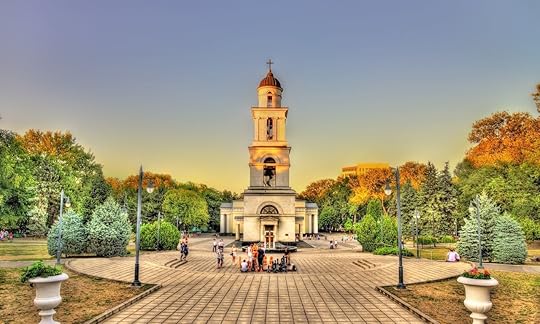
Aside from the unenviable title of Europe’s least-visited country, Moldova is also the continent’s poorest. Due to a lack of information about the country and its culture, many travelers have concerns about visiting Moldova, and as rumors swirl, common misconceptions have spread about this tiny landlocked nation in Eastern Europe. In reality, though, it’s more than worth a visit. Here are the worst myths about Moldova that need to die — and why you should add the little country to your bucket list.
1. Moldova isn’t safe.
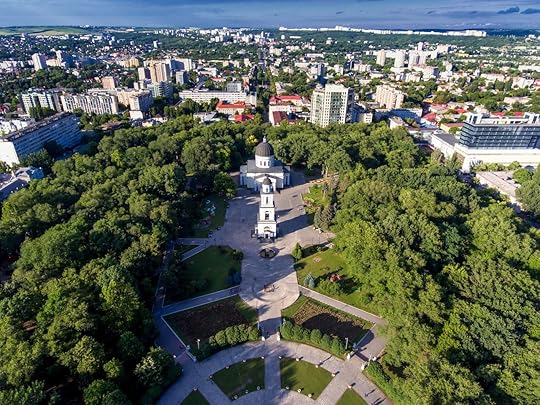
Photo: Calin Stan/Shutterstock
Moldova is Europe’s most impoverished country. Most residents struggle to make ends meet, and foreigners typically come with a more valuable currency. Petty crime exists much as it does in any major city, certainly not aided by poor street lighting, widespread alcoholism, and dark underpasses. But with a dose of common sense, Moldova isn’t any more dangerous than the rest of Eastern Europe. Violent crime against foreigners is rare and terrorism is nonexistent. Keep your valuables close, be vigilant, and take care when it’s dark — maybe avoid walking under that overpass — but in general, the cities of Chisinau and Balti are safe to travel to. You can always ask the restaurant or bar to call an official taxi at night and bring a flashlight if you’re walking.
Moldova remains among the most corrupt nations in Europe. The Global Corruption Barometer discovered 75% of Moldovans think their police are corrupt, and former Prime Minister Vlad Filat was recently jailed for bribery. Travelers often feel concerned about this image, worrying the police will stop and ask for hefty “fines” or otherwise use their power to extort money from them. A decade ago perhaps, but it’s not the norm anymore. Tough anti-corruption campaigns aim to clamp down on bribery, and unless they break the law, police usually leave foreigners alone. Familiarize yourself with what you can and shouldn’t do before visiting. Crossing the land border into or out of Romania or Transnistria is another concern, but if you have the right to visit and your passport handy, even this shouldn’t cause any problems.
2. It’s difficult to get around Moldova.
Compared with Western Europe, getting around Moldova can be a bit of a challenge. Driving is a bad idea — think pot-holed roads in desperate need of repair combined with locals driving at breakneck speed. Rather than getting a car, a network of marshrutkas (minibuses) are available to zip you around to even the smallest of villages throughout the country. Many Moldovans rely on public transport to get to and from their hometowns. You don’t need to buy a ticket in advance. In most cases, you can turn up at the bus station and find a marshrutka heading to your destination. Get a seat, pay the driver, and brace for an uncomfortable trip — but hey, you’re going to get there. Marshrutkas regularly connect travelers heading from the capital city of Chisinau to Tiraspol in Transnistria, Balti, and Iasi in Romania.
3. There’s nothing to do in Moldova.
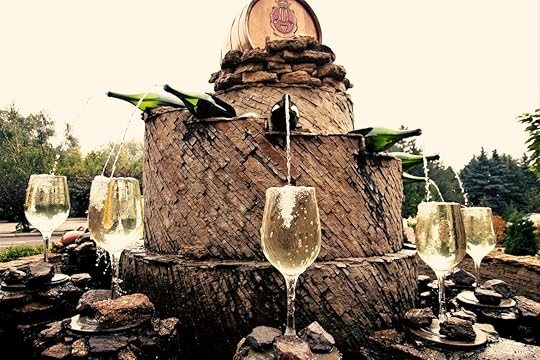
Photo: Sun_Shine/Shutterstock
This myth relates to the fact that many people have never heard of Moldova, and it’s far from the radar of most European tourists. There aren’t many travel guides, visitors, or active tourism campaigns. Most information comes from travelers’ experiences and blogs, which make it tough to find official info. But with proper trip planning, you can step beyond the initial uncertainty and find a post-Soviet nation frozen in time. You’ll discover Chisinau’s communist architecture and Moldova’s high-quality wine region, a part of the country that is slowly beginning to attract global attention. Visit Transnistria — the breakaway state with its own border control, currency, and police force — or travel to parts of Moldova that even the limited number of tourists who do come here often overlook, such as the northern city of Balti. Don’t expect medieval castles, old towns, and grandeur. Instead, relish in the adventure and the chance to see a unique and highly cultured part of Europe.
4. Travelers will be sent to prison for taking photographs.
It’s against Moldovan law to take pictures of both government offices and military facilities. This includes the airport and some public buildings, among others. If you see a guard in military uniform outside, don’t take a photograph. But you can snap pictures of just about anything else in Moldova. Going back to the point above, there are cultural differences, and it’s import to respect the law of the land. Don’t try to sneak a photo of restricted buildings or you might find yourself in trouble.
5. Moldovans are cold and unfriendly.

Photo: SlayStorm/Shutterstock
This myth isn’t just about Moldova; it’s a stereotype extended to most Eastern Europeans. Visitors from extroverted nations like the United States often perceive the locals as cold and distant. Moldovans don’t smile in public, and people in the service industry aren’t too chatty. Rather, they speak directly, but this shouldn’t be taken as unfriendliness: It’s merely a cultural difference. Don’t expect conversations with the ticket seller or waiter. But you’ll get your ticket and your food will arrive. If you want information, ask a specific question. You’ll get a direct answer.
An assumption that communication with locals, including service staff and otherwise, will be almost impossible isn’t quite true, either. The younger generation of Moldovans speaks at least some English. Older Moldovans often converse in Russian. Not everyone speaks English, but you shouldn’t have too many problems getting around. You’ll likely hear about an ongoing dispute over whether the Romanian and Moldovan languages are the same or different, but regardless, learn a few phrases of Moldovan, and combined with the minimal English spoken in the country, you’ll get around okay. To make transportation easier, write the name of your destination on a piece of paper and show it to the marshrutka driver. Simple measures like these compensate for any language barriers.
6. Moldova has snail-pace WiFi.
Moldova’s connection speed averages just under 14 MB/s, plenty of speed for general use. More than 90% of the country’s three million residents have access to the internet. This means you can update your social media, watch videos, and make Skype calls without disruption from most cafes and hotels, especially in bigger cities. Moldova, like Romania, has surprisingly fast WiFi, with the added bonus of being very affordable. You can also get mobile data for your trip with either an Orange or Moldcell SIM Card with a data plan, available at shops throughout Chisinau and at Chisinau International Airport.
7. Moldova is still a communist country.
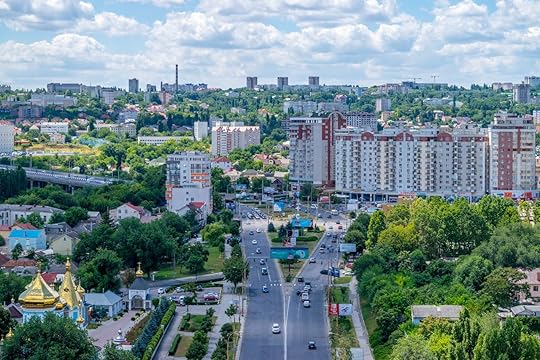
Photo: ungureanuvadim/Shutterstock
For almost 70 years, Moldova was part of the USSR. Though the Communist Party remained in power after independence in 1991, Moldova is no longer a communist country. It is important to remember, however, that the older population has lived a decent chunk of their lives under communist ideology, and for them, the old Soviet mentality still lingers. You’ll enjoy your trip much more if you embrace the formalities, strange rules, and quirky nature of travel. It’s part of what makes the experience of visiting this country unlike anywhere else. 

More like this: Why wine lovers should be planning a trip to Moldova
The post 7 myths about Moldova that need to die appeared first on Matador Network.

How Bogota is transforming

Visions of Colombia are often shaped by the legend of drug lord Pablo Escobar — fueled by the popular television series Narcos — and stories of FARC-driven violence that, until recently, dominated international headlines. In the heart of Bogota, the country’s capital and the center of years of unrest, a Colombian university is working to change what was once the city’s most violent neighborhood for the better, and with that, the perception the rest of the world has of Colombia.
The Externado University of Colombia is sponsoring tourism classes for former gang members and equipping them to guide tours of Egipto neighborhood, the former center of Bogota’s gang violence. These tours are both bringing money and resources into the city and giving these locals valuable work. You can take part in the first incarnation of their efforts on a trip to Colombia by signing up for the Breaking Borders tour.
Travel company Impulse Travel coordinates the tour for you, connecting you with the guides and escorting your group through a piece of the city’s recent history. Along the way, you’ll hear stories rich in hope and promise to overcome a violent past. The tour’s fee, about $47 plus any tips you throw their way, helps the guides and their families build a financial foundation through honorable work.
Walking through a neighborhood rocked by violence
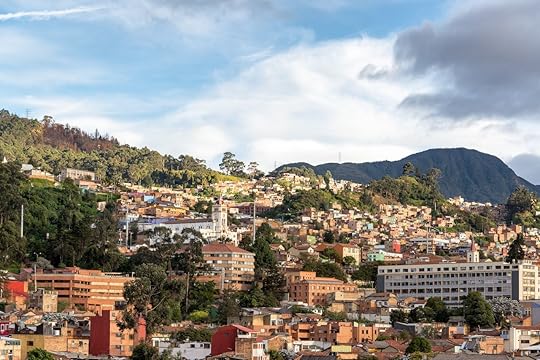
Photo: Jess Kraft/Shutterstock
The tour starts with a history lesson. Calle 10, the artery of Bogota’s Egipto neighborhood, curves up a steep hillside on the eastern edge of the bustling La Candelaria barrio. But Calle 10 is much more than just a road — it’s a community that is home to 142 families and 600 people. The invisible border separating the two neighborhoods marks a line between the beating heart of Bogota — an area flush with colonial architecture and lined with restaurants, bars, museums — and the historic Plaza de Bolivar, one that, until the early 2000s, was the site of some of its most violent gang activity. This line also inspired the tour’s name, Breaking Borders.
In La Candeleria’s thriving nightlife and cultural scene, restaurants and bars occupy brightly painted one- and two-story Art Deco buildings. Museums and government centers surround the Plaza de Bolivar, and families huddle around busking musicians. The neighborhood’s streets are lined with Bogotanos, tourists, and students munching on empanadas and arepas bought from the area’s many vendors and stalls.
A far different vibe lurks across Carrera 1, the street that acts as an invisible border between the two neighborhoods. In Egipto, the second oldest neighborhood in Bogota, armed policeman stand on the street corners; there are bullet holes in the buildings’ facades and boarded shopfronts. Large murals about the barrio’s violent past are everywhere — a floral design signals growth and a buried past, a cartoonish-looking bear and alligator symbolize the coming together of different tribes around a glass of local chicha.
For 27 years, rival gangs controlled Egipto and effectively split the district into two warring factions. Gang members enacted disputes over territory, drugs, women, etc. and the violence often affected everyone in Egipto. Between 1990 and 2002, more than 1,200 murders took place in the neighborhood, nearly 70 percent of the kids between the ages of 12 and 18 and the vast majority carried out with homemade guns. During the height of Bogota’s drug-rattled violence, the gangs regularly robbed and kidnapped university students residing in La Candelaria, using violence and threats to extort money, run drugs, and assert their power.
Nearly everyone in Egipto has lost someone close to them to gang activity, and many men admit to having been a part of it themselves. Many aren’t shy to lift up their shirt to reveal bullet scars and stab wounds.
Giving former gang members agency and resources to better themselves
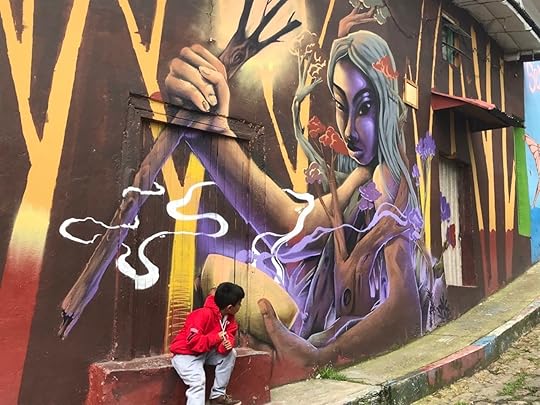
Photo: Tim Wenger
In an effort to ease the tensions between the neighborhoods and prevent students from getting robbed, the Externado University of Colombia began a program in 2001 to sponsor tourism classes for former gang members, training them in the basics of the tourism industry and creating an opportunity for them to turn their community around. The program’s goal was to help Egipto improve its economic standing by building a solid financial base from a legitimate — and legal — source and keep clean from drugs and violence. It also transforms a controversial tourism industry, slum tours, into something that directly helps the affected locals, rather than exploit them for third-party gain.
In practice, the process is ongoing and still in its infancy after only two years, but so far the signs are positive. After completing the sponsored university courses, Jaime Roncancio formed the Breaking Borders tour along with four other former gang members.
Over the course of a few hours, Jaime and his colleagues walk visitors through the city’s 27 years of violence. The tour kicks off with a walk up the steep cobbled street, taking in the large murals, which provide a visual narrative of the area’s history.
One of the main stops is a small school for the area’s kids — the first of its kind in Egipto. The small schoolhouse, an open-air main room with an adjoining kitchen and restroom, services kids before they are old enough to enroll in public school. Contrary to most establishments in the area, it welcomes children from both rival sides of the neighborhood.
The tour then continues up to El Cuadrado, the community’s central square formerly used as the gangs’ gathering spot. El Cuadrado now serves as one of the main focal points of the Breaking Borders tour where Jaime and other former gang members sit guests down and rap their life story. That’s when visitors learn that Jaime’s whole family was sucked into the violence — he took his first bullet at age eight and in the ensuing years was shot another seven times.
Building a future for the residents of Calle 10
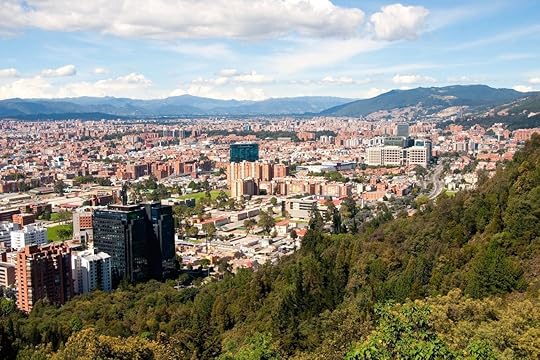
Photo: De Jongh Photography/Shutterstock
Funds from the tour go straight into the community — for schools, meals, and a well-groomed soccer pitch, which sits at the top of the neighborhood overlooking the high-rises of the city below.
The soccer field has become a central hangout for kids in Calle 10 — there always seems to be a game in progress. A large cement wall is visible from the pitch, marking the divide in the neighborhood established by the warring gangs. Violence is still raging on the other side of the wall, even as kids laugh over a game of soccer less than 100 yards away.
The tour’s final stop is Jaime’s home. As a token of appreciation, Jaime invites everyone who takes the tour into his living room for a shell of homemade chichi, a thick alcoholic drink made from distilled corn that he brews in a copper pot in his kitchen. Jaime’s self-constructed balcony offers a far-reaching view of Bogota’s sprawling skyline to the west and a striking spot to enjoy a drink. While violence is far from being fully eradicated in the city, Jaime and the rest of the Breaking Borders crew have embraced education and community development for the sake of the neighborhood’s positive transformation. He likes to leave his guests with these simple words: “Today, we’re rapping and singing instead of robbing.” 

More like this: 23 Colombian foods the whole world should know and love
The post How former gang members are rebuilding Bogota’s most violent neighborhood appeared first on Matador Network.

6 famous regional Chinese dishes

China is one of the most diverse countries in the world when it comes to food. In the western part of the country, dishes are influenced by spices traditionally traded along the Silk Road while in central and southern China, food is often loaded with spicy peppers. Eastern China is home to dim sum and soup dumplings. This all goes to say that there’s no one “Chinese food.” These six regional foods give you a taste of China’s culinary diversity.
1. Shanghai’s xiao long bao, or soup dumplings
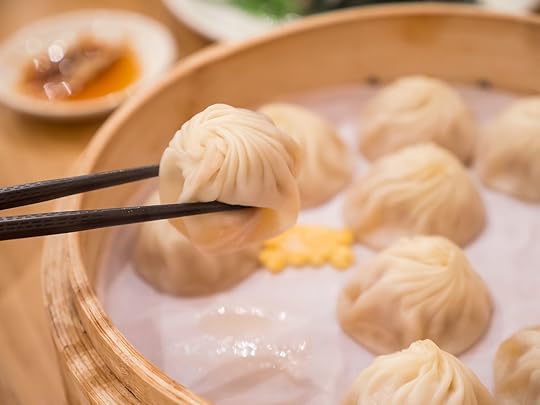
Photo: HYS_NP/Shutterstock
According to legend, xiao long bao were first created in 1875 in Nanxiang, which is just outside of Shanghai. Unlike other dumplings, a rich, searing hot broth is inside the dumpling skin along with meat. They’re traditionally eaten with fresh ginger and vinegar. Xiao long bao have become the international darling of dumpling lovers around the world (and inspired a Pixar short film called Bao), but it all started just outside of China’s largest city. If you want to eat them in the city they’re from, the Michelin-starred chain Din Tai Fung has locations around Shanghai. A popular hole in the wall is Jia Jia Tang Bao just north of People’s Square.
2. Xi’an’s rou jia mo, or the Chinese hamburger
Xi’an was the capital of Imperial China from the 11th century BC to 900 AD. It’s famous for the archaeological site housing the Terracotta Warriors, but those in the know visit the Muslim Quarter for some of the world’s best street food. On the street within the old city walls, dozens of hawkers serve up a flatbread that’s crispy on the outside, soft on the inside, and stuffed with spiced pork, beef, or lamb. It’s called rou jia mo, and it’s known as the Chinese hamburger because of its appearance. Rou jia mo, however, is much, much older than what Westerners think of as a hamburger.
3. Chengdu’s Sichuan hot pot

Photo: norikko/Shutterstock
Chengdu is one of only a handful of cities in the world to be recognized by UNESCO for its culinary tradition. It’s the capital of Sichuan Province, and no visit is complete without a late-night outing at one of the city’s hundreds — if not thousands — of hot pot restaurants. Sichuanese hot pots feature two bubbling broths: a fiery, mouth-numbing red ma la broth of chili and Sichuan peppers, countered by a subtle white bone broth to cool off your scorched palate. You place the meat, vegetables, and noodles in the side you want and cook it yourself at the table. If you’re in the Chengdu and want to narrow your search for the best hot pot, Jordan Porter, owner of Chengdu Food Tours, suggests Bashu Dazhai Men or Qingnian Huguon.
4. Chongqing’s xiao mian in chili oil
Chongqing is a hilly city in the Sichuan province just down the river from Chengdu, and it’s known for its mouth-numbing Sichuan peppers. Xiao mian (little noodles) is a dish made up of thin wheat noodles and vegetables served in a broth with ma la chili oil. The main thing to know is that it’s spicy, and it’ll shock anyone unprepared to handle the extreme heat. It’s not just for lunch and dinner, either. Locals in Chongqing will eat these spicy noodles topped with a fried egg for breakfast.
5. Yangshuo’s beer fish

Photo: HelloRF Zcoo/Shutterstock
Yangshuo is a picturesque town in the Guanxi province near China’s southern border with Vietnam. It’s known for outdoor sports and its stunning green limestone hills. Though Yangshuo isn’t exactly famous for its culinary tradition, sometimes one dish is enough to put a place on the map. In this case, that dish is a deep-fried freshwater carp from the local Lijiang River that’s braised in beer with tomatoes and chilli peppers. The origin story goes that a fisherman overcooked his carp until its skin was dark and crunchy, then poured a bottle of local brew, Liquan, into the pan. Thus, a legendary dish was made. If you have a chance, try it at Meijie Lijiang Beer Fish and you’ll know why locals say, “You don’t know how delicious it is till you try it in Yangshuo.”
6. Gulin’s you cha, or oil tea
You cha (oil tea) is like nothing else on this list — and like nothing you’ve ever tasted. An indigenous dish of the mountainous people in the region, the Yao, Miao, and Dong all make their own version but all a similar preparation. First, a tea broth is made with tea leaves that are deep-fried before steeping. Then it’s served with puffed cereal, toasted rice, caraway seeds, and scallions. The deep green, herbal broth is a caffeinated pick me up, medicinal concoction, and breakfast cereal in a single bowl. Try it in any of Guilin’s local tea shops or take a day trip to the panoramic Longsheng rice terraces to lose yourself in the natural beauty of China’s tea country. 

More like this: I am from China. Here’s what Americans get wrong about my homeland.
The post 6 regional Chinese dishes that show off the country’s culinary diversity appeared first on Matador Network.

Backcountry hut trip in Colorado

The Colorado backcountry is filled with breathtaking scenery, untracked powder, and huts hidden throughout that you can reserve. Huts are one of the more comfortable ways to head into this winter wonderland, and they’re readily available for all levels of experience and intensities. From floating on fresh pow to rum-shrouded game nights, hut trips in the backcountry are anything but boring.
As much fun as they can be, hut trips also come with dangers lurking in the crannies of adventure. It’s important to plan, know what gear to take, and learn safety precautions so that you and your backcountry partners can have fun. With some crazy friends, meals planned, skis on boots, and a wood-burning sauna waiting, the backcountry called us to its snow-covered expanse. 
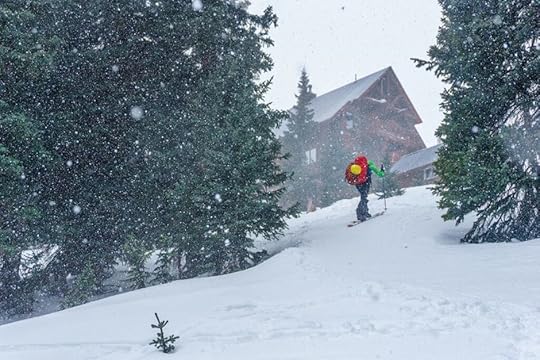
1
Drew makes the final push up to the cabin. Engulfed by a snowstorm during our final mile, the tracks we are following are completely blanketed. It’s incredibly important to study maps and trip reports and take the necessary directional equipment - like a compass or a global satellite device.
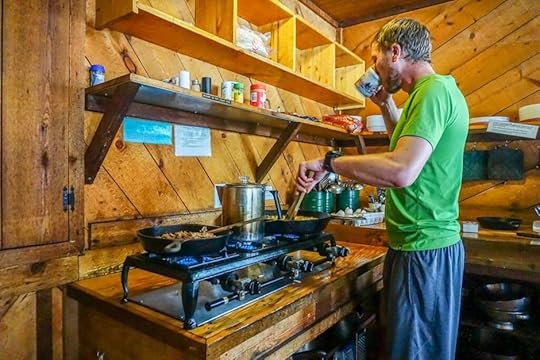
2
At times, meals can be the epitome of hut life. After a day of shredding, you come back to a cabin filled with the smell of fajitas and toasting tortillas. Depending on your group size, sometimes it’s helpful to break meals up, assigning two people to cook for everyone. This maximizes relaxation time while minimizing lone cooking stress. Chris starts on breakfast while the rest of our group snoozes away.

3
Drew and Larry discuss slope safety and devise a plan for the day over a stack of pancakes. Avalanches are no joke, and it’s important to take the necessary precautions for your safety and the safety of your partners. Carrying equipment like a shovel, beacon, and probe in avalanche territory isn’t the only must. Knowing how to use this equipment is vital. You should also take an AIARE avalanche training course when traveling in the backcountry to learn about decision making, how to use your equipment, and to get some practice.
Intermission
Culture
7 things bartenders do that piss off their non-bartender friends
Melissa Allen
Nov 6, 2018
Travel
Live out your Halloween fantasy in the Colorado town that inspired The Shining
Tim Wenger
Sep 17, 2018
Travel
11 amazing things to do in Poland that will get you stoked to visit
Emily Kaszton
Dec 4, 2018
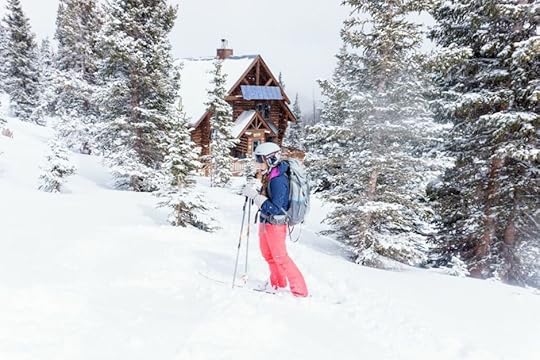
4
Lindsay takes a breather near the cabin after making some beautiful tracks. With fresh snowfall the night before, we’re lucky to have a few days of pristine powder.

5
Drew moves along a slope checking out the terrain in the distance. With all that untracked terrain, only avalanche safety concerns keep us from skiing anywhere our feet can take us.
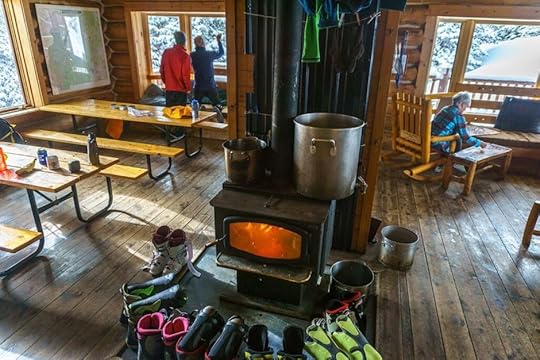
6
Lunch is a time for tasty treats and warming our toes. After eating, more avalanche safety is discussed. Huts are always well stocked with books, puzzles, and visitor logs, so the option is never just to ski. Peggy works away at a puzzle while Larry and Drew observe slopes now affected by the afternoon sun.

7
Lindsay heads back out after lunch for a few more laps. Afterward she’ll head back to warm up in the wood-burning sauna. Huts around the Colorado backcountry come with a variety of amenities, sometimes including a sauna.

8
A gully now filled with tracks lays behind us, and we have another whole day to ski to our heart’s content. The remoteness, ruggedness, and cold deter most people from winter hut trips - which also means sparsely populated, neverending terrain to explore.

9
Another important planning step is to check on the weather conditions. We got hit with a snowstorm the evening before and wouldn’t have been able to find the trail had it not been for the route we programmed into our satellite device. On the way out, though, we cruised easily all the way back to our cars.

10
Hut trips aren’t just for the winter. Vibrant greens and fields speckled with wildflowers give a stark juxtaposition to the snow-covered mountains. Summer also allows for lighter packs without bulky winter gear, but make sure to check into water sources! No snow to melt might mean you’re packing in your water.

More like this: How to plan a backcountry ski trip
The post How to do an incredible backcountry hut trip through Colorado appeared first on Matador Network.

How to make ponche navideño

Every year on December 16th, a nine-day Christmas celebration called Las Posadas starts in Mexico and other parts of Central America. It involves religious reenactments, songs, and community gatherings. But Las Posadas isn’t complete without one crucial ingredient: a communal cocktail punch called ponche navideño (which translates to “holiday punch”). Because like any holiday gathering, it’s all made a little better with a stiff drink.
It’s impossible to pin down the exact moment that ponche navideño became the ever-present drink of Las Posadas. For many households, it’s also impossible to imagine December without the punch. What is known is that the drink is directly tied to the celebration.
The Las Posadas tradition was brought to Central America by Spanish colonizers sometime in the 1600s. Las Posadas was then as it is now: part celebration and part lesson on the Biblical story of Mary and Joseph. At dusk, people in the town go out and sing songs outside of people’s homes, asking if they could stay (posadas means “inn”). This represents Mary and Joseph looking for a place to rest while she was pregnant, and happens for nine nights to represent the nine months of her pregnancy. The group of carolers is denied entry until they reach a designated house to rest for the night. That’s where the Mary and Joseph metaphor stops and the party begins.
Cups of warm ponche navideño are passed around along with empanadas, tamales, and other traditional holiday food. A piñata with seven spikes (one for each deadly sin to beat away) is brought out for the kids. And while the religious aspects of Las Posadas aren’t as emphasized in many households today, the gathering of friends and family over food and a bowl of ponche navideño continues.
“Growing up and even as an adult, Christmas in Mexico is not complete without a hearty pot of hot ponche navideño,” Jorge Baralles Jr., the general manager of Papi’s Tacos in Greenville, South Carolina, said. “I remember as a child in Mexico, around 20th of December, I would go with my grandma to the market for ingredients. It was a treat to pick out fruits that would go into the ponche.”
It’s impossible to know when punch became a centerpiece of the celebration. Punch itself likely comes from India and was spread around the world during the Age of Exploration in the 17th century. Cocktail historian David Wondrich traces the first written mention of punch to 1632, and the first recipe not long after, in his book Punch. Like all cocktail histories, however, people were probably making it long before someone sobered up and wrote it down. Regardless, a punch is always composed of something sweet, something sour, liquor, water, and spices, and the ingredients are usually inspired by what’s locally available.
“[Ponche navideño] is a must in almost every Mexican household,” Baralles said. “Each family will have ponche at one point in December.”
Think of ponche navideño as the Santa of Central American cocktails. It only comes around at the end of the year and is well loved, but don’t even think about bringing it out in a month that doesn’t start with the letter D.
“I’d say that ponche is just as popular as rompope (Mexican eggnog) and horchata during the holiday season,” said Richard Sandoval, the chef and owner of Toro Toro and El Centro D.F. in Washington, DC, as well as many other restaurants. “Horchata will always be a staple for me, and it is served at all my restaurants. But the ponche is very festive and is the perfect beverage to enjoy during the month of December. I’ve never tasted anything else like it anywhere else that I’ve traveled.”
Sandoval is serving ponche navideño at some of his restaurants to bring it to a wider audience. In addition to his DC locations, it’ll be on the menu in New York City’s Maya and Denver’s Tamayo and La Sandia.
If you can’t taste it there, the next natural step is to make it yourself.
How to make ponche navideño
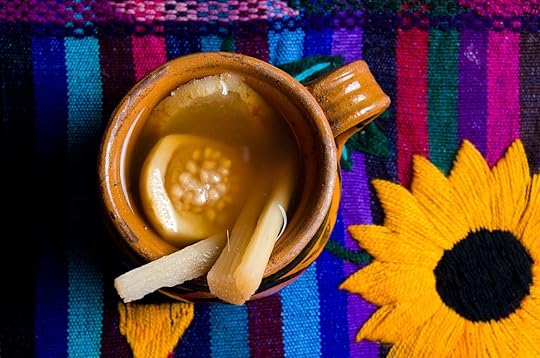
Photo: Playa del Carmen/Shutterstock
There’s no one recipe. The essential ingredients are tejocote (Mexican hawthorne), cinnamon, sugarcane, apples, and raisins. Baralles’ family recipe also includes lemongrass, star anise, and lemon leaves. Rum — the most classic of spirits to use in punches — is a common liquor, but Sandoval likes to break tradition and add blanco tequila. If you can’t find an ingredient, substitute it for what’s available. Just make sure you hit the five necessary components of a punch: sour, sweet, liquor, water (from the melted ice), and spice. What ponche navideño tastes like largely depends on whose house you’re drinking it in.
“Papi now makes my grandma’s poncho recipe,” Baralles said. “For our family, we can’t go through the Christmas season without it. When we go over to papi’s house for the holiday, walking into the house brings me tears. The aroma permeates the home. It takes me back to when my grandma would make it back home. I now encourage my children to watch papi make it, so that they can remember the smell of the fruits and herbs. They will remember and one day keep the tradition going.” 

More like this: The most popular Christmas desserts around the world
The post It’s not Christmas in Mexico without 9 days of ponche navideño appeared first on Matador Network.

Taj Mahal increases ticket prices
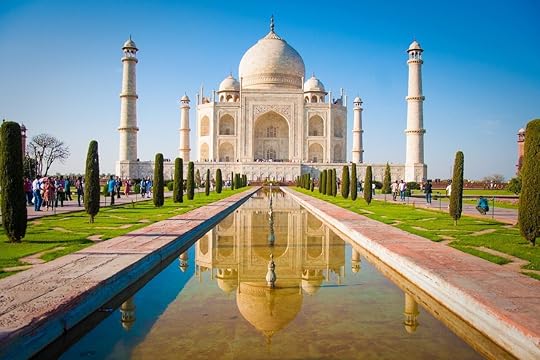
It’s pretty tough to discourage tourists from visiting India’s Taj Mahal — the iconic white-marble mausoleum is a masterpiece of architecture and a UNESCO World Heritage site.
But one way the Indian government is attempting to curb the numbers of visitors to protect the monument from overtourism is to increase ticket prices dramatically — from 50 rupees (70 cents) to 250 rupees ($3.50) for Indian citizens, and from $16 to $19 for foreign visitors.
The famous monument, completed in 1648, is one of the world’s most popular attractions, but it’s been feeling the effects of its 7 million annual visitors — the floors are eroding from footfall. The mausoleum exterior has also been damaged by the effect of pollution and insects, and the site is even under siege by monkeys!constantly climbing up the building’s facade. Earlier this year, the Indian Supreme Court issued an ultimatum: restore the monument, or shut it down.
The new pricing structure will also help generate more revenue to fuel conservation and restoration efforts. According to the ASI, the change is expected to reduce visitors by 15-20 percent. 
H/T: Lonely Planet

More like this: 4 alternatives to see the Taj Mahal away from the crowds
The post The Taj Mahal increases entry fee by 400 percent to reduce visitor numbers appeared first on Matador Network.

ANA new sea turtle plane livery

Japan’s All Nippon Airlines (ANA) just secured itself a spot in the list of the world’s coolest airplane liveries. The airline’s brand new Airbus A380s just rolled out of the paint shop in Hamburg featuring beautiful blue sea turtles on their bodies.

Photo: Airbus
Since the aircraft’s only route will be Tokyo to Honolulu, its paint job was curated to pay homage to the Hawaiian blue sky.
This livery is the result of the hard and talented work of 120 painters using 3,300 liters of paint to cover a surface of 3,600m².
Most beautiful Indian temples
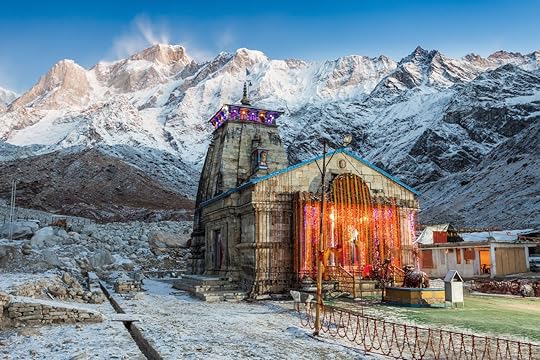
India has an area of 1.3 million square miles, a population of 1.3 billion, and a history tracing back at least 30,000 years, and still, the Taj Mahal hogs all the attention. Yes, it’s a crowning achievement of Mughal architecture. And sure, you probably want one of those photos that makes it look like you’re holding it by the dome. But it’s easy to lose sight of just how much the subcontinent has to offer beyond the big marble landmark — including its two million plus temples.
While holy sites like the Golden Temple in Amritsar and Sri Meenakshi have made their way onto the sightseeing circuit, many of the most impressive Hindu and Jain structures in India still fly under the radar of most visitors. Here are nine temples you’ve probably never heard of that definitely deserve a spot on your Indian itinerary.
1. Ranakpur Jain Temple

Photo: Igor Plotnikov/Shutterstock
Among the most impressive testaments to Jainism anywhere, this temple is reason enough to visit Rajasthan, a state that’s no stranger to architectural marvels being that it also hosts the Amer Fort and City Palace in Jaipur. Ranakpur has been wowing worshippers and visitors since the 15th century, many of whom come to see the 1,444 pillars and test the claim that no two are carved the same.
2. Ramanathaswamy Temple

Photo: CRS PHOTO/Shutterstock
Built to honor Shiva, this Jyotirlinga temple sits on an island in Tamil Nadu where it serves as a pilgrimage site for certain Hindus, including Shaivites and Smarthas. Architectural standouts include the ornate and brightly decorated exterior corridors, said to be the longest in the world, and the 22 tirthas, or holy water bodies used in bathing rituals by pilgrims.
3. Kedarnath Temple

Photo: saiko3p/Shutterstock
Another of the 12 Jyotirlinga temples dedicated to Shiva, Kedarnath may be small, but it’ll certainly catch your eye. The most impressive thing about the temple has little to do with the structure itself: It’s all about its stunning, snowy location in the Himalayas. Kedarnath is situated in the Garhwal range in Uttarakhand, a state in northern India, and is only accessible between April and November. This is due to the area’s harsh winter weather and the fact that no roads lead directly to the temple, so worshippers have to walk 11 miles up the mountain to pray at Kedarnath, which sits at an altitude of 11,755 feet.
4. Virupaksha Temple
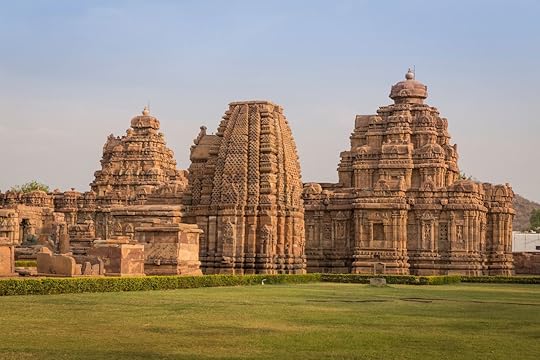
Photo: Kevin Standage/Shutterstock
Virupaksha is the main temple of the Pattadakal temple complex. The site hosts both Hindu and Jain temples built as far back as the seventh century, and it earned a UNESCO designation for its mix of northern and southern Indian architectural and design elements. Virupaksha is the largest of the monuments, as well as the most detailed, decorated head to toe with friezes, inscriptions, and even reliefs commemorating Hindu figures. Like most of the temples in the complex, it faces east, the most auspicious direction.
5. Sharadamba Temple
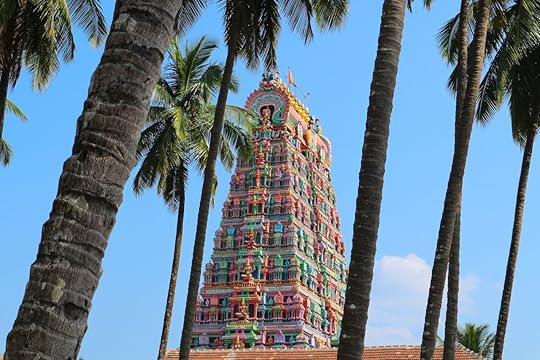
Photo: d_odin/Shutterstock
What started as a simple sandalwood shrine in the eighth century was a full-on temple honoring the goddess Saraswati by the 14th century. Over the years it’s been embellished with a gold statue of Sharadamba, the deity that presides over Sringeri, and the tall entrance tower has been painted bright pastel colors. Sharadamba is one of several temples in Sringeri, a hill town in Karnataka, and a popular prayer site for parents with small children, who appeal to Saraswati to endow their children with knowledge. Also worth checking out is the adjacent Vidyashankara Temple.
6. Gandikota canyon temples

Photo: Jayakumar/Shutterstock
Perched above the Gandikota gorge in Andhra Pradesh is an ancient fort housing two temples devoted to Madhava, an incarnation of Vishnu, and Ranganatha, a south Indian Hindu deity. Of the two, the Madhava Temple is the more architecturally striking, particularly inside. That said, the entire fort is a sight to behold with granary, temple, watchtower, and even mosque ruins on display, making Gandikota one of the coolest little-known attractions in all of India.
7. Vidyashankara Temple
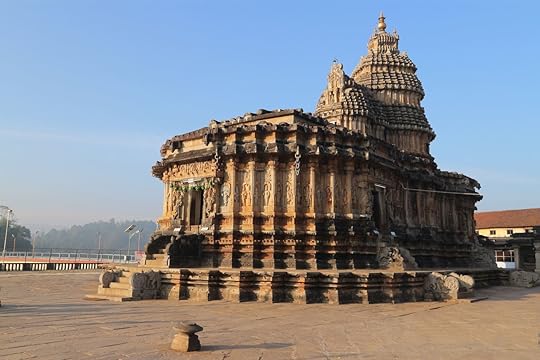
Photo: d_odin/Shutterstock
Vidyashankara is one of a several temples in the Karnataka state of southwestern India. Its design incorporates all the elements you’d expect of a Hindu temple — including sculptures that depict ancient myths and separate shrines dedicated to Brahma, Vishnu, and other deities — as well as a few astrological considerations. The temple is held up by 12 pillars, representing the 12 zodiac signs, and oriented so the sun hits particular pillars during celestial events like equinoxes and solstices.
8. Airavatesvara Temple
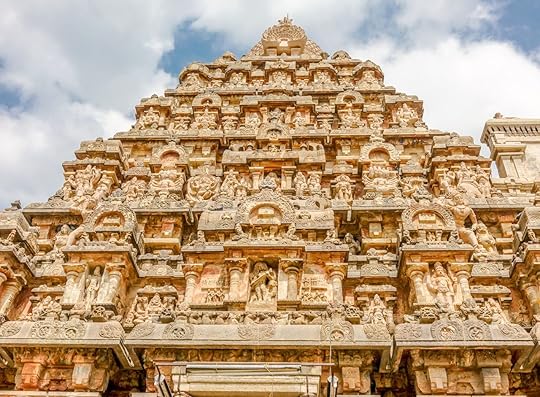
Photo: Sompol/Shutterstock
With its elaborate carvings, adjoining shrines, and UNESCO status, it’s a mystery why this temple isn’t better known. Among tourists, that is — it’s a major Hindu pilgrimage site. Located in Tamil Nadu, a south Indian state, Airavatesvara is dedicated to Shiva as is evidenced by the many depictions of the deity, be it in the form of a carving, sculpture, or wall painting. The temple earned its protected status in 2004 as one of the Great Living Chola Temples, a group of Hindu temples in Tamil Nadu built between the 11th and 12th centuries during the Chola dynasty.
9. Palitana Jain temples
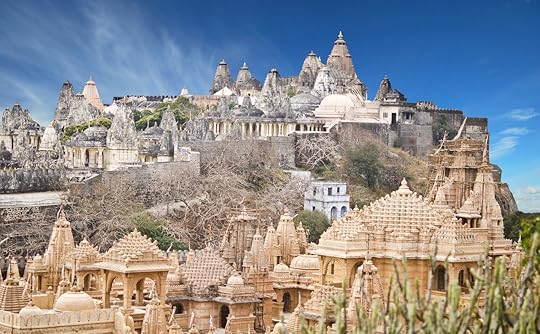
Photo: Waj/Shutterstock
Overlooking Palitana in India’s northwestern Gujarat state is a huddle of marble-carved temples built atop Shatrunjaya hill. In fact, the roughly 860 Jain temples found in the hills around Palitana have earned the city its very apt nickname: “City of Temples.” It’s a bit of a trek to reach the main temple, but that doesn’t stop dedicated Jain pilgrims from ascending the 3,500 steps to get there. The oldest structure erected at the site is believed to date back to the 11th century while those that remain standing trace back to the 16th century — with new temples being added to the site even today. 

More like this: The 7 most amazing temples in Thailand outside of Bangkok
The post The most beautiful temples in India you’ve never heard of appeared first on Matador Network.

Best Christmas gifts for bartenders
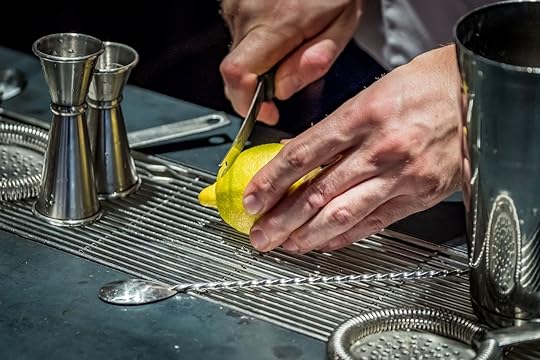
Bartenders, mail carriers, your building’s super — we all deserve a little love over the holidays. But finding a thoughtful Christmas gift for someone who pours drinks for a living is not as easy as it may seem. Here are nine gifts that all the bartenders in your life would appreciate this holiday season.
1. A pair of sensible clogs

Photo: Dansko Footwear/Facebook
Non-slip clogs bring joy to anyone who stands on their feet for a living. Any bartender can crush a 10-hour shift with ease in these babies from Dansko. Plus the slight platform heel makes you stand straighter and gives you a subtle height boost, all the better to peer down on your patrons. Even if your bartender friend already has a pair, they can always use a funkier pair than their regular black ones to cheer up their work outfits.
2. Booze, especially if it’s something unique
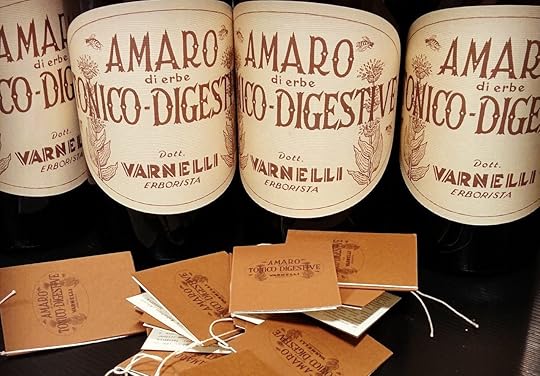
Photo: Distilleria Varnelli/Facebook
A bottle of local mezcal from your trip to Oaxaca or a hard-to-find amaro make great gifts for bartenders. We’re surrounded by booze for a living, so it’s best to make it something strange or special. It doesn’t have to be expensive, though. Homemade bitters or cheap beer from your hometown would be just as thoughtful.
3. A beautifully-illustrated cocktail book
View this post on InstagramA post shared by Bartenders Keep (@bartenders_keep) on Nov 18, 2018 at 2:36pm PST
Bartenders enjoy learning new tricks and recipes. Liquid Intelligence by Dave Arnold is a great read for long-time bartenders because it scientifically deconstructs the craft of bartending in such a way that even an experienced bartender will look at their cocktails in a whole new light. Imbibe!, Death & Co: Modern Classic Cocktails, and The Craft of the Cocktail are all great options, too.
4. A massage ball
View this post on InstagramA post shared by Breakaway Therapy & Training (@breakawaytherapyandtraining) on May 27, 2016 at 12:29pm PDT
A professional massage is even better, but if you’re looking for a stocking stuffer, a mini massage ball is a godsend for a bartender. Years of keg-lifting and cocktail-shaking causes repetitive stress on our arms, shoulders, and legs. Massage balls let you target areas of pain and work out tense muscle groups. We can all use a little tension release.
5. Fancy hand lotion
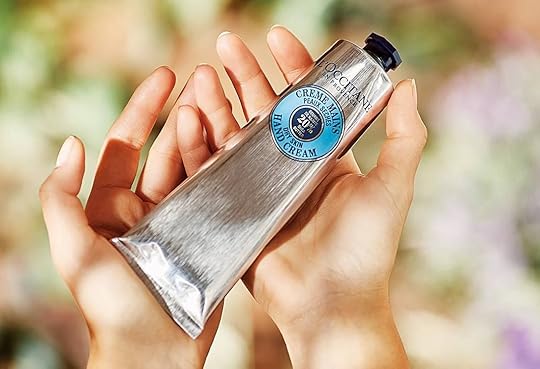
Photo: L’OCCITANE en Provence/Facebook
Bartending does a number on the hands, especially in winter. Help your favorite bartender keep things moisturized by gifting a fancy lotion. Since it’s the holidays, we recommend springing for something a bit nicer than Lubriderm, such the collection from L’Occitane. Though O’Keeffe’s Working Hands Hand Cream is a classic if you’re looking for something a bit more rugged.
6. A sensible backpack

Photo: Baggu
From bar kits to uniforms, bartenders often have to tote their tools from home to work. Help us upgrade our promo totes and old gym bags by gifting us a carry-all that is a bit more professional. A grown-up backpack such as this one from Baggu, in canvas or leather, is a good blend of practicality and style.
7. A nice paring knife

Photo: Opinel/Facebook
Paring knives are an essential part of a bartender’s toolkit. We use them every day to prep fruit for garnishes and muddling. Most bars supply knives, but they often get lost, misplaced, or left unsharpened. Make life easier by gifting a bartender their own personal paring knife. Make it a high-quality brand like Opinel and that knife will last for years.
8. A smoking cloche
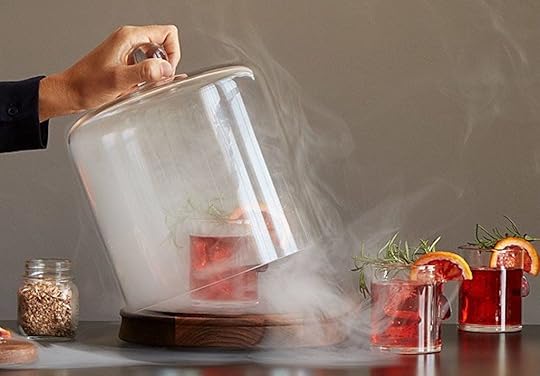
Photo: Uncommon Goods
If you’re looking for a more whimsical gift option, try a smoking cloche. This at-home smoker allows your bartender buddy to experiment with smoking their cocktails. They can use different types of woods, herbs, and spices to create complex, smoke-infused beverages. It looks cool as hell and could make for some interesting cocktail parties.
9. A huge tip
Nothing makes us bartenders happier than generous tips. So, this holiday season, throw down 30 percent for those Christmas Eve cocktails or leave an extra $20 for that bartender that also gets you a round. ‘Tis the time of year to pay it forward. 

More like this: 7 things bartenders learn from working holidays
The post 9 perfect gifts for bartenders this holiday season appeared first on Matador Network.

December 13, 2018
Ice hotels to stay in this winter
Most of us think of cozy beds and warm rooms after a day of playing in the snow. But those who love winter and unconventional lodgings would gladly trade memory foam mattresses and high-thread-count sheets for a night in an ice hotel that looks like Elsa’s frozen palace. Built by snow architects and artists, ice hotels are ephemeral and make for a very cool experience. Here are seven of the craziest ice hotels from around the world where you can spend a frosty night.
1. Ice Hotel Jukkasjärvi, Sweden
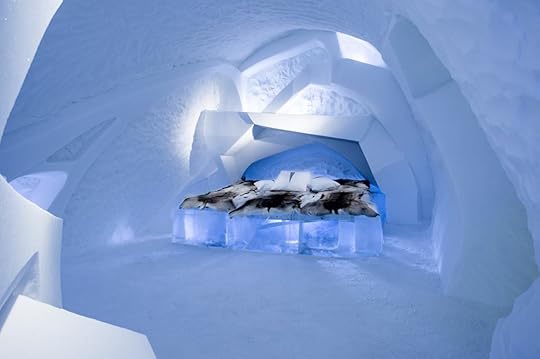
Photo: ICEHOTEL/Facebook
Ice Hotel Jukkasjärvi in Sweden first opened in 1989 and was the first ice hotel ever created. It is made of snow and ice blocks from the nearby Torne River, artfully sculpted by artists to make every room special. Because nobody wants your room and the beautiful carvings it contains to melt, the place has no heating, so it is always around 23 degrees Fahrenheit. To warm up, you can hit the sauna located in another building and take advantage of the trip to use the bathroom — the rooms don’t have plumbing either.
The hotel has enough rooms for about 100 guests, a reception area, a restaurant, a bar, a church, and an ice-sculpting studio. While most of the rooms are only available from December to April, some can be booked year-round in the ICEHOTEL 365 section, thanks to solar panels that cool the rooms 24/7. Getting to Ice Hotel JukkajÄrvi is as much fun as staying there — you’ll need to ride a dog sled or snowmobile and hike in the snowy wilderness where the northern lights are often seen dancing above.
2. Hôtel de Glace, Quebec, Canada

Photo: Village Vacances Valcartier/Facebook
The Hotel de Glace on the outskirts of Quebec, Canada, knows how to make its guests feel cozy even when everything around them is frozen. Each room has a different theme and is filled with art, including ice sculptures, and some even have their own fireplace (yet nothing melts).
As expected, the temperature never exceeds 27 degrees Fahrenheit, but inside your room, you feel very sheltered from the elements. There’s a hot tub and sauna outside where you can soak to keep your toes from falling off. The hotel is located within the biggest winter park in North America, with snow slides you can use day and night, snowy slopes you can tube down, and a large skating rink illuminated at night.
3. Schneedorf Igloo, Austria
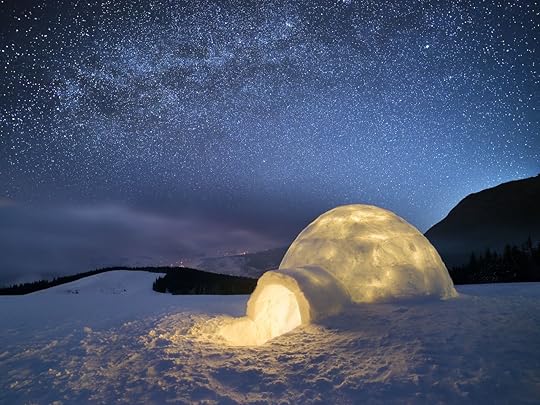
Photo: Kotenko Oleksandr/Shutterstock
At the Schneedorf Igloo Hotel, located on one of the highest peaks of the Tyrolean Mountains, you get to sleep in an igloo that you built with your own hands. A guide is there to help you understand the techniques and skills required to build this unique dwelling. You work on it all day with a lunch break, and by nighttime, you get to try it out. If you prefer to skip the work, book one of the already built ice rooms. Choose between a four-person or “romantic” double room igloo surrounded by nature.
4. Hotel of Ice, Lake Balea, Romania

Photo: Hotel of Ice
Opened in 2005 as the first of its kind in Eastern Europe, the Hotel of Ice at Balea Lake in Cartisoara greets its guests each winter. Accessible by cable car, the hotel is up in some of the highest peaks of the Carpathians. Every year, ice architects and artists carve all of it by hand using packed snow and ice blocks from the Balea Lake, the largest glacial lake in Romania. No two rooms are alike, and no two seasons are alike — to make it more interesting, they change the theme each year. This winter season, the theme is “Music on Ice,” and the rooms are named after famous musicians, from classical composers to rock and pop stars.
5. The SnowHotel at the SnowCastle Resort in Kemi, Finland

Photo: 365
Part of the SnowCastle Resort in Kemi, the SnowHotel is considered a luxury hotel — even though the temperature inside your room is always around 23 degrees Fahrenheit, and you get sleeping bags meant for Arctic conditions and a lambskin cover for linens. The rooms are spacious and each has a unique carving near the bed.
When you’re not all cozy in your room, make sure to check out the snow castle. Built every winter since 1996 with snow and ice from seawater, the structure resembles a medieval castle beautifully decorated with sculpted walls. There are many winter activities to partake in Kemi, so don’t miss out on a day of ice karting, ice fishing, or even a fat bike safari.
6. Sorrisniva Igloo Hotel Alta, Norway
[image error]
Photo: Sorrisniva Igloo Hotel Alta, Norway/Facebook
The northernmost ice hotel in the world, the Sorrisniva Igloo Hotel in Norway has been rebuilt every year in about five weeks by local workers and artists since 1999. Using new themes relating to local traditions, artists and craftsmen build the hotel’s 26 bedrooms, four suites, an ice bar, and an ice chapel and decorate them with magnificent ice carvings. Activities organized by this cool hotel include snowmobile safaris and meeting the Sami family and their reindeers to go sledding.
7. Igloo-Dorf, Switzerland

Photo: Iglu-Dorf/Facebook
Based in Switzerland, the Igloo Dorf Villages have seven locations: five in Switzerland, one in Germany, and one in Austria. Each igloo village is built every year and decorated with sculptures according to individual themes. The rooms are all connected in a semicircle through a tunnel system, centered around a restaurant, and connected to a bar. You can book a group room or a romantic one — some even come with private jacuzzis and toilets — and all are beautifully decorated with stunning wall carvings. 

More like this: 10 epic high-alpine hotels you need to stay in before you die
The post 7 crazy ice hotels to check out this winter appeared first on Matador Network.

Matador Network's Blog
- Matador Network's profile
- 6 followers



